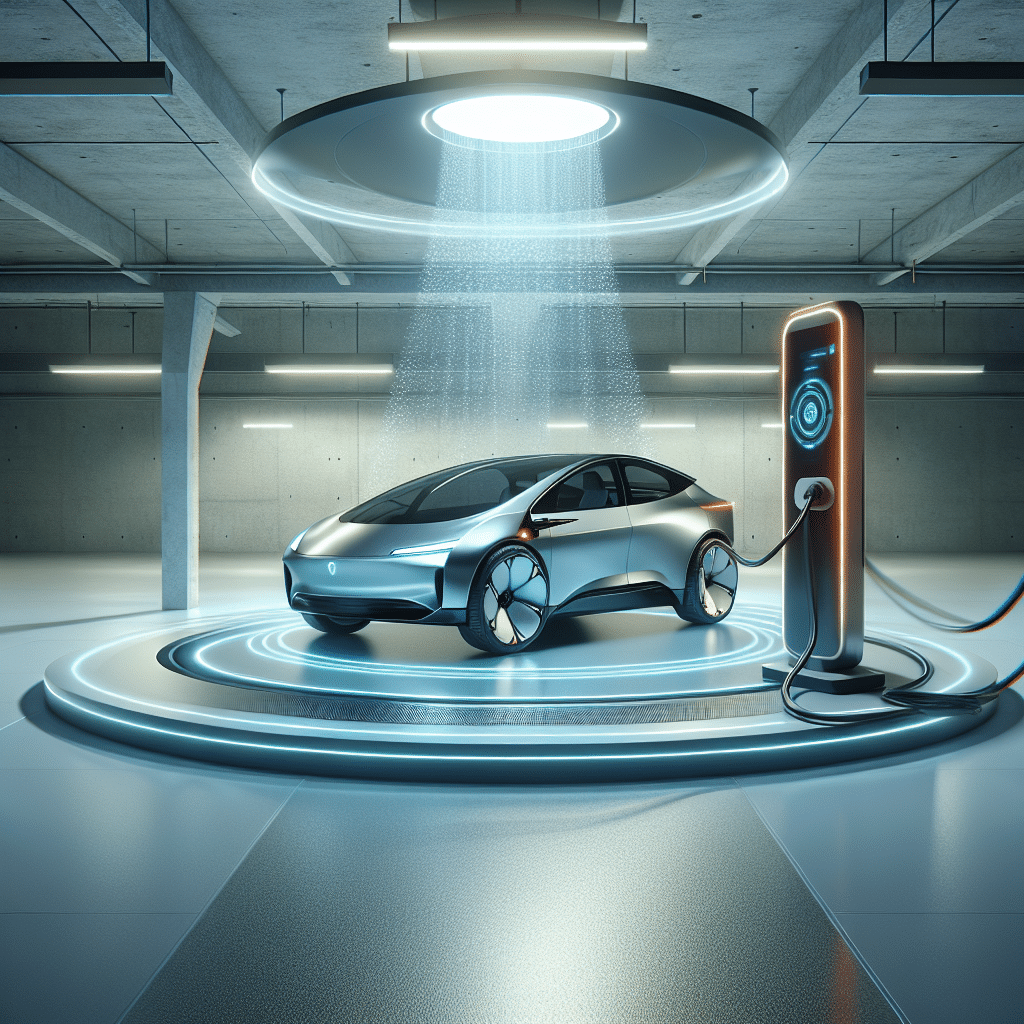The Rise of Wireless EV Chargers
Wireless electric vehicle (EV) chargers are revolutionizing the concept of recharging electric vehicles. These innovative charging solutions eliminate the need for traditional cables and plugs, providing a seamless experience for users. As the popularity of electric vehicles continues to rise, understanding wireless charging technology, its benefits, and its potential impact on the automotive landscape is critical.
How Wireless EV Charging Works
Wireless EV charging uses electromagnetic fields to transfer energy between two coils—a transmitter coil connected to a power source and a receiver coil installed in the vehicle. When the vehicle is parked over the charging pad, the transmitter coil generates a magnetic field, which induces an electric current in the receiver coil, effectively charging the vehicle’s battery.
This technology can be further enhanced by implementing resonant inductive coupling, allowing for greater distances between the coils and more efficient energy transfer.
Types of Wireless EV Charging Technologies
1. Inductive Charging
Inductive charging is the most common form of wireless charging. It involves magnetic fields and inductive coupling to transmit energy. The advantages include:
- Convenience: Users simply need to park their vehicle over the charging pad without worrying about plugging in.
- Weatherproofing: The technology is enclosed, making it resistant to the elements.
2. Magnetic Resonance Charging
Magnetic resonance is a more advanced form of charging that operates on a similar principle as inductive charging but allows for greater distance between the coils. This can lead to more flexible vehicle positioning over the charging pad.
3. Dynamic Wireless Charging
Dynamic wireless charging technology is being developed to allow vehicles to charge while in motion. Embedded charging strips in roadways can continuously transmit energy to vehicles equipped with compatible receiving systems. This game-changing innovation could significantly enhance the convenience and efficiency of electric vehicle usage.
Benefits of Wireless EV Charging
1. Enhanced Convenience
The primary advantage of wireless EV chargers is their ease of use. Drivers no longer need to handle cumbersome cables, making the charging process simpler and less time-consuming.
2. Safety and Durability
Wireless chargers are often designed with safety features to prevent overcharging and overheating. The absence of physical connectors also reduces wear and tear on both the charger and the vehicle’s port, leading to increased longevity.
3. Aesthetic Integration
Without visible cables and plugs, wireless charging stations can be designed to blend seamlessly into various environments, both residential and commercial, enhancing the overall aesthetic appeal.
Current Market Developments
The wireless charging market is expanding quickly. Companies like BMW and Nissan have shown interest in commercializing wireless EV chargers. For instance, BMW developed a system known as “Wireless Charging” which allows for charging at home by utilizing an induction pad.
Another major player, Witricity, has pioneered wireless EV charging technology and licensed its patents to several automakers. As more manufacturers explore this technology, the market for wireless chargers will continue to grow.
Challenges Facing Wireless EV Charging
While there are significant advantages, several challenges remain that could inhibit widespread adoption:
1. Initial Costs
Wireless charging infrastructure tends to be more expensive than traditional plug-in systems. The high installation costs, along with the need for compatible vehicles, may deter some consumers and businesses.
2. Efficiency Concerns
Currently, wireless charging systems are less efficient compared to plug-in chargers. Energy loss during transmission leads to lower charging speeds, although advancements in technology are likely to bridge this gap.
3. Standardization Issues
As various manufacturers develop their wireless charging technologies, the lack of standardization poses a risk. Different systems may not be compatible with various EV models, complicating widespread use and adoption.
Future Trends in Wireless EV Charging
1. Smart Charging Networks
The integration of IoT (Internet of Things) technology into wireless EV chargers can lead to more efficient charging networks. Smart charging systems can analyze energy demand, optimize charging times, and adapt based on grid conditions, enhancing overall efficiency and cost-effectiveness.
2. Vehicle-to-Grid Technology
Wireless charging could play a significant role in the implementation of vehicle-to-grid (V2G) systems. This concept allows EVs to return power to the grid, using their batteries for energy storage during off-peak hours. Wireless charging can enhance the practicality of V2G systems by enabling automatic charging and discharging processes.
3. Expansion of Public Charging Infrastructure
As public interest in EVs grows, more cities are investing in wireless charging stations, from parking spaces to transit hubs. The development of robust public charging infrastructure will be paramount in increasing EV adoption rates and enhancing the overall user experience.
Conclusion
Wireless EV chargers symbolize a significant shift toward sustainable transportation. Their convenience, safety, and potential for future developments position them as an essential component of the modern automotive landscape. As technology advances and challenges are met, the widespread adoption of wireless EV charging could redefine the way we think about electric vehicle usage and energy consumption.
